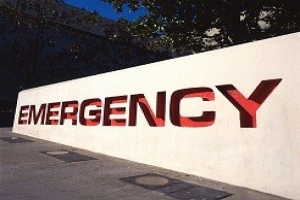Emergency Department Impact Status Scorecard

The ED Impact Status Scorecard is a novel system stress indicator
that allows hospitals to communicate real-time facility capacity. This
system facilitates the ongoing partnership between hospitals, EMS
providers, and County EMS.
For EDs experiencing capacity stresses, the Impact Scorecard allows
for a standardized, objective calculation for staff to communicate
their current situation. Staff
should submit updates through the LEMSIS Resource Bridge ED Impact
Status field whenever the internal situation changes. Scores
that have not been updated within 4 hours will not be considered
accurate.
County EMS continues to work with all system partners to develop automated, real-time, actionable, and informative data sources to improve coordination and patient care. Timely Impact Status Scorecard data will inform decisions regarding County Ambulance Diversion. The County EMS Duty Officer will evaluate Scorecard data, along with other metrics, when evaluating systemwide capacity strain.
Emergency Department Impact Status Scorecard
| ||||
| Last Update: 9/2023 | ||||
| All other versions should be discarded | ||||
| ED Impact Description
| Points | Score | ||
| 1 | Equal to or greater than 50% of ED beds1 committed to ED Boarders2 | 1 | ||
| 2 | Waiting room number of patients is greater than 50% current active beds1 | 1 | ||
| 3 | Critical patients equal to or greater than 10% of ED beds1 | 1 | ||
| 4 | Declaration of a "Disruption of Services" Event4 | 2 | ||
| 5 | 3 or more ambulances3 have "Delta/Echo"5 or "Code 10/Code 20"6 patients awaiting TOC | 1 | ||
| SCORE |
| 0-6 | ||
| Please refer to the online version for official use. | ||||
-
Additional Footnotes & Definitions
- Number of staffed & immediately available ED beds at time of scoring (incl. patient care spaces/beds/care capacity elements actively engaged in patient care)
- ED Boarder = patient awaiting placement elsewhere
- At any one facility
- Disruption of Services caused by one or more of the following:
- Electrical Outage
- Employee walkout or acute staffing shortages resulting from disaster
- HVAC system failure
- Imaging
- Information Services failure
- Laboratory
- Medical gas failure
- Medical vacuum failure
- Natural gas failure
- Nurse call failure
- Pharmacy
- Plumbing/sewer failure
- Steam failure
- Telephone system failure
- Water failure
- MPDS (911) Dispatch Codes Defined
- Alpha - EMTs - Cold (No Lights or Siren)
- Bravo - EMTs - Hot (Red Lights and Siren)
- Charlie - ALS Responding Alone* - Cold Response
- Delta - ALS Possibly Life Threatening - Hot w/ First Responders
- Echo - ALS Life Threat w First Responders - Hot
- Metro Zone Transport Codes Defined
- Code 10 - Life Threatening
- Code 20 - ALS Intervention (IV, Rx, etc.)
- Code 30 - ALS Monitoring (ECG, SPO2, Sugar)
- Code 40 - BLS Transport Only
- Code 50 - Alternative Transport was appropriate
* Response time dependent
Internal Disaster Declaration: A hospital cannot accept any patients through the 9-1-1 system because of a critical disruption of the ability to provide medical services (e.g., due to structural failures, infrastructure disruptions, or health and safety threats). Upon notification of an Internal Disaster, County EMS and HHSA PHPR can begin processes to evacuate the declaring hospital and distribute patients to other facilities. Internal Disaster notifications are immediately distributed to MHOAC, RDMHC, CDPH, Fire OAC, 9-1-1 Communication Centers, Private Ambulance Agencies, and HASD&IC.






